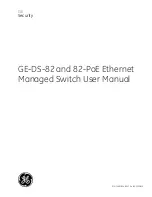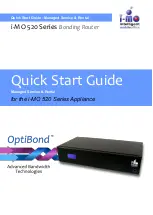
3-7
Cisco BPX 8600 Series Installation and Configuration
Release 9.3.30, Part Number 78-12907-01 Rev. E0, May 2005
Chapter 3 BPX Switch Common Core Components
Broadband Controller Card
The BCC runs self-tests continuously on internal functions in the background and if a failure is detected,
the
fail
LED is lighted. If the BCC is configured as a redundant pair, the off-line BCC is indicated by
the lighted
stby
LED. The
stby
LED also flashes when a software download or standby update is in
progress. The LAN LED indicates activity on the Ethernet port.
Back Cards for the BCC-4V
The back cards for the BCC serve as an interface between the BPX switch and the BPX switch network
management system.
For the BCC-4V, the back card is the BCC-3-BC. (These back cards are also known as the BCC back
cards).
The BCC-4V provides important features such as support for up to 19.2 Mbps peak operation with BXM
cards. Both BCCs in a node should be of the same type.
The back card provides the following interfaces:
•
An 802.3 AIU (Ethernet) interface for connecting the node to a CWM NMS.
•
A serial RS-232 Control Port for connecting to a VT100-compatible terminal or modem.
•
A serial RS-232 auxiliary port for connecting to an external printer.
•
External clock inputs at T1 or E1 rates, output at 8 kHz.
The face plate connectors are described in Table 3-2, Table 3-3, and shown in Figure 3-4. The
BCC15-BC is shown on the left and the BCC-3-BCC is shown on the right.
For specifications on cabling, see Chapter 31, “BPX Switch Cabling Summary.”
Table 3-2
BCC15-BC Back Card for BCC-32, Connectors
Connector
Function
CONTROL
A DB25 connector for a VT100 or equivalent terminal for a basic terminal
connection enabling you to use the command line interface commands. You can also
connect to a dial-in modem for remote service support or other network
management dial-up access. This is a bidirectional RS232 communications port. It
is not used for CWM Network Management; the LAN connector is used for CWM
Network Management.
AUXILIARY
A DB25 connector for a system printer. This is a one-way, RS232 outgoing port.
XFER TMG
DB15 connector that supplies an 8-kHz timing signal (RS422 type output that is
synchronized to the BPX switch system clock.)
EXT TMG
A 75-ohm BNC connection for clock input. An E1 source with 75 ohm impedance
typically uses this connector. If the shield on the cable needs grounding, slide the
BCC back card out and jumped connector JP1 across its two pins.
EXT TMG
DB15 connector for a primary and optional redundant external source of system
clock. A T1 source with 100 ohm impedance or an E1 source with 100/120 ohm
impedance typically use this connector.
LAN
A DB15 Ethernet LAN connection for connecting to a CWM NMS. You can also
connect a terminal (or NMS other than CWM) to the BPX switch LAN port via
Ethernet. However, only the CWM NMS provides full management configuration
and statistics capabilities via SNMP and TFTP.
Summary of Contents for BPX 8650
Page 49: ...P A R T 1 The BPX Switch ...
Page 50: ......
Page 159: ...P A R T 2 Installation ...
Page 160: ......
Page 273: ...P A R T 3 Initial Configuration and Network Management ...
Page 274: ......
Page 311: ...P A R T 4 Configuring Connections ...
Page 312: ......
Page 487: ...P A R T 5 Troubleshooting and Maintenance ...
Page 488: ......
Page 533: ...P A R T 6 BPX Specifications ...
Page 534: ......
Page 555: ...P A R T 7 Appendices ...
Page 556: ......
















































